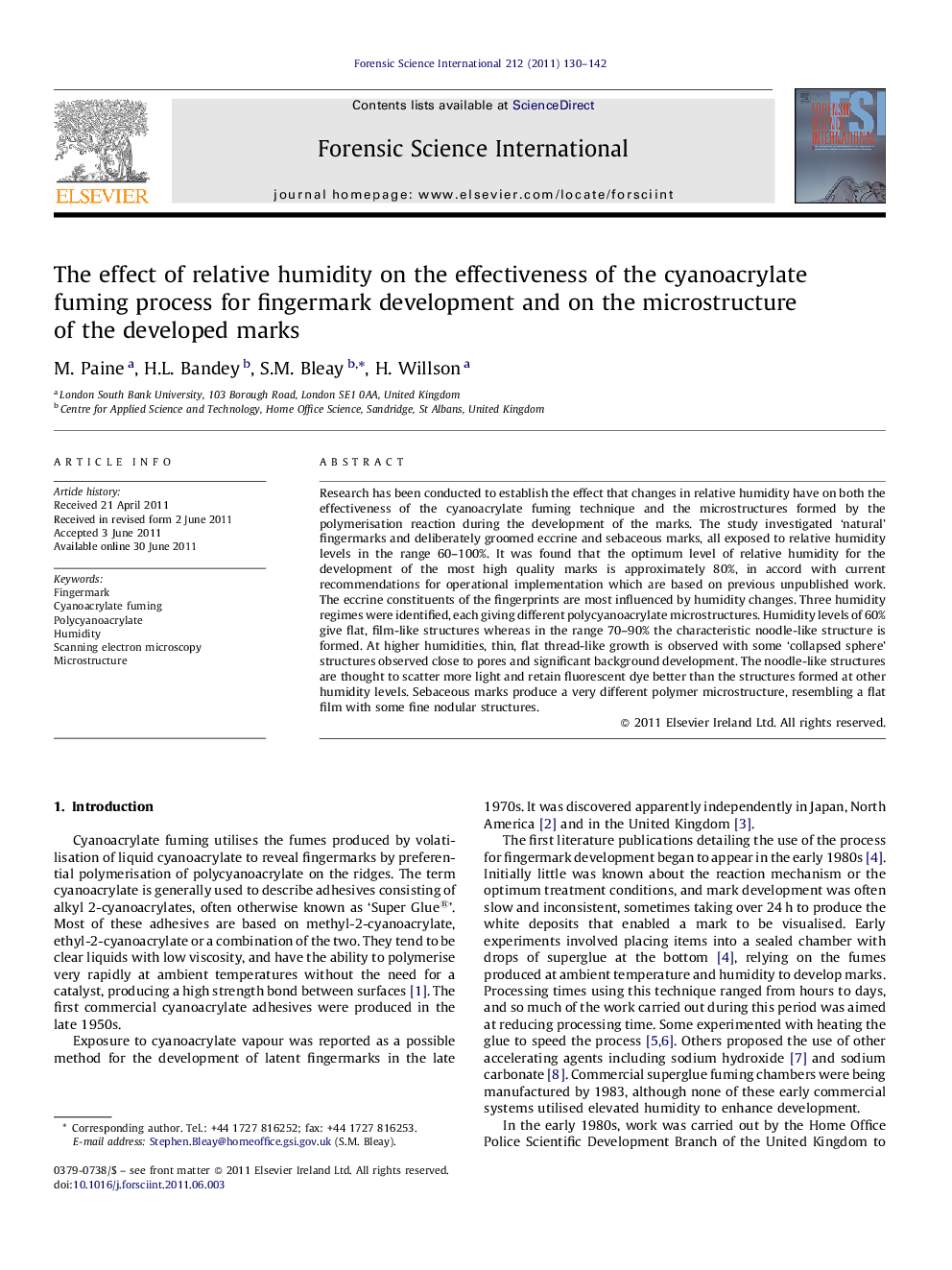| کد مقاله | کد نشریه | سال انتشار | مقاله انگلیسی | نسخه تمام متن |
|---|---|---|---|---|
| 96201 | 160459 | 2011 | 13 صفحه PDF | دانلود رایگان |

Research has been conducted to establish the effect that changes in relative humidity have on both the effectiveness of the cyanoacrylate fuming technique and the microstructures formed by the polymerisation reaction during the development of the marks. The study investigated ‘natural’ fingermarks and deliberately groomed eccrine and sebaceous marks, all exposed to relative humidity levels in the range 60–100%. It was found that the optimum level of relative humidity for the development of the most high quality marks is approximately 80%, in accord with current recommendations for operational implementation which are based on previous unpublished work. The eccrine constituents of the fingerprints are most influenced by humidity changes. Three humidity regimes were identified, each giving different polycyanoacrylate microstructures. Humidity levels of 60% give flat, film-like structures whereas in the range 70–90% the characteristic noodle-like structure is formed. At higher humidities, thin, flat thread-like growth is observed with some ‘collapsed sphere’ structures observed close to pores and significant background development. The noodle-like structures are thought to scatter more light and retain fluorescent dye better than the structures formed at other humidity levels. Sebaceous marks produce a very different polymer microstructure, resembling a flat film with some fine nodular structures.
Journal: Forensic Science International - Volume 212, Issues 1–3, 10 October 2011, Pages 130–142